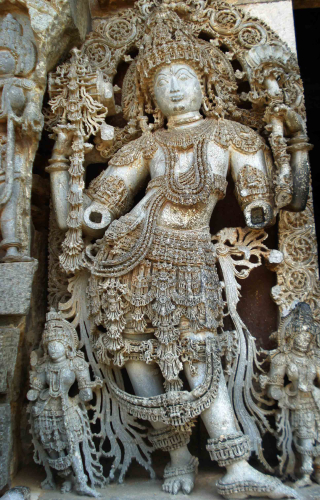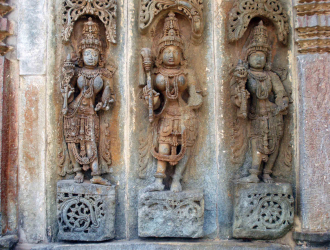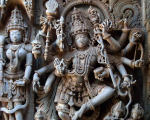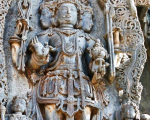The Sanskrit equivalent of ornament is bhooshana; the verb bhoosha means ‘to adorn or decorate with'. Early sculptures all over the world display more of ornaments on the body than costumes. In India ghungroos or anklets have always enjoyed a favoured position among one’s ornaments. In Indian temple architecture we have innumerable examples of sculptures wearing different versions of ghungroo. The images in this gallery are from Hoysala temples of Chennakeshava at Belur, Hoysaleswara at Halebidu and Keshava at Somanathapura in Karnataka.
The Hoysala Empire that ruled most of Karnataka between the eleventh and fourteenth centuries was most famous for its archtecture. The first capital was at Belur, later it was shifted to Halebidu. The three temples from where the images are taken are perfect examples of exquisite Hoysala craftsmanship. This gallery draws your attention to the various ghungroos, worn by gods, goddesses and other celestial beings, like kinkinika that has small bells attached to them, ratna jalaka that covers almost the entire foot, kataka vareity that is ring-like and worn above the anklet etc.
The images were taken by Dr Manorama B.N. and Vishnuprasad

















